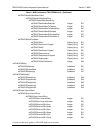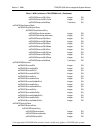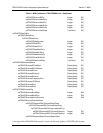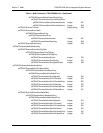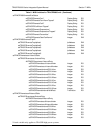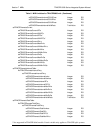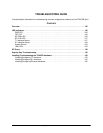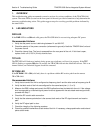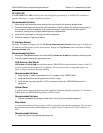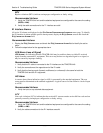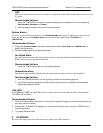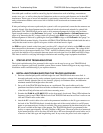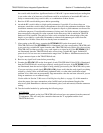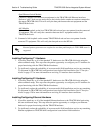
TRACER 6000 Series Integrated System Manual Section 8 Troubleshooting Guide
612806420L1-1F Copyright © 2005 ADTRAN, Inc. 131
the coaxial cable should be a significant fraction of 100 mW. A power meter/analyzer reading that
is not on the order of at least tens-of-milliwatts could be an indication of unsuitable RF cable or
faulty or unreasonably long coaxial cable, or a combination of these factors.
5. Resolve all RF coaxial cabling errors before proceeding.
6. Attach the RF coaxial cables to a high-quality attenuator, if possible. If you do not have an
attenuator, attach the coaxial cables to the antennas to be used in the permanent installation. If the
installation antennas are not available, small, inexpensive dipole or patch antennas can be used for
verification purposes. If an adjustable attenuator is being used, dial in the amount of attenuation
that corresponds to the path loss value expected for the microwave link in which the TRACER
hardware will be installed. The path loss value can be calculated from a knowledge of the path
length, or provided by a path study. Remember to subtract both antenna gain values from the
attenuator level if these values have not already been accounted for.
7. After setting up the RF pieces, examine the
RF DOWN LED on the front panel of each
TRACER 64x0 unit. If the
RF DOWN LED is illuminated (red), the corresponding TRACER 64x0
is not receiving a suitable RF signal from the other TRACER 64x0 unit. In this case, the receiving
TRACER 64x0 is either receiving a very weak signal or no signal at all. If the
RF DOWN LED is
not illuminated, then the TRACER 64x0 units are receiving a suitable RF signal. Suitable RF
power levels for low error rate communication range from -30 dBm to -88 dBm measured at the
N-type connector input on the TRACER 64x0 unit.
8. Resolve any signal level issues before proceeding.
9. Examine the
RF LOW LED on the front panel of each TRACER 64x0. If this LED is illuminated,
then the TRACER 64x0 is receiving a relatively weak signal; however, if the
RF DOWN LED is
not illuminated, then the received signal is being suitably processed by the TRACER 64x0 system.
If you are receiving a weak signal (
RF LOW is ON), please verify that the weak signal is not being
caused by a faulty cable, an insufficiently tightened cable, or some other installation-related
problem. Also, make sure an unreasonably large attenuation value has not been selected if you are
using an attenuator on a workbench setup.
Use the tables in Section 2, Microwave Path Engineering Basics, on page 15, of this manual to
select the proper free-space attenuation value (in dB) based on the estimated length of the
microwave path. Remember to subtract both antenna gains (local and remote) from the attenuator
setting.
10. Test the installed modules by performing the following steps:
4xT1 Module
Initiate a line loopback on the local TRACER 64x0 unit and run a test pattern from the connected
T1 equipment. This will verify the connection between the T1 equipment and the local
TRACER 64x0 unit.



